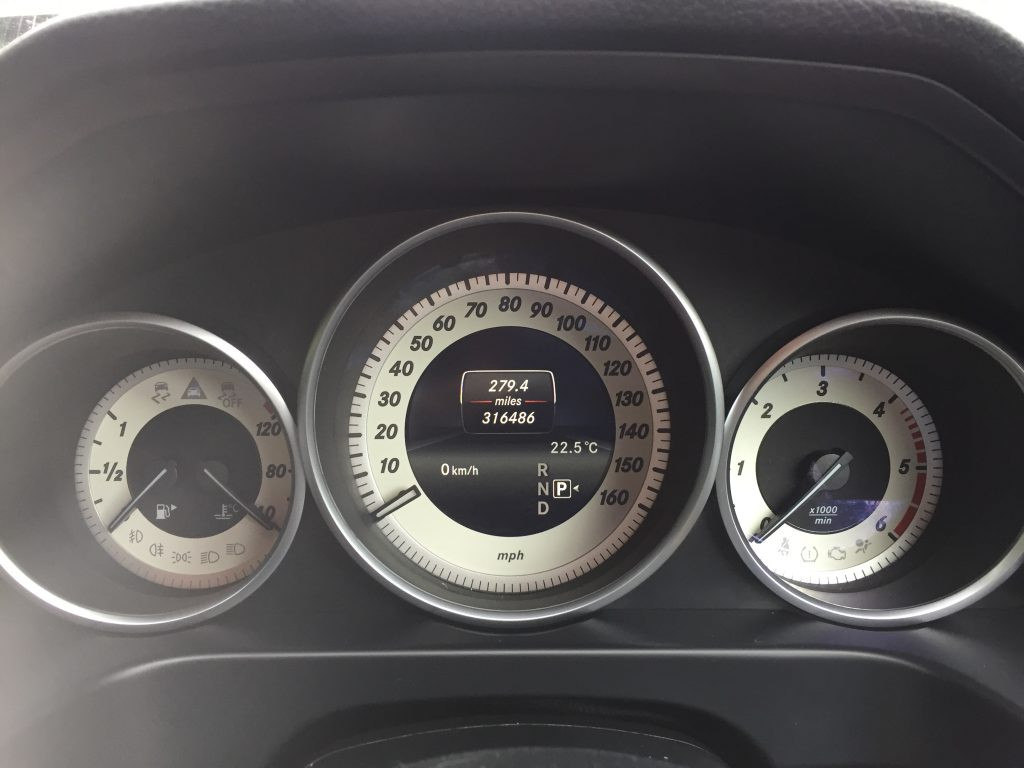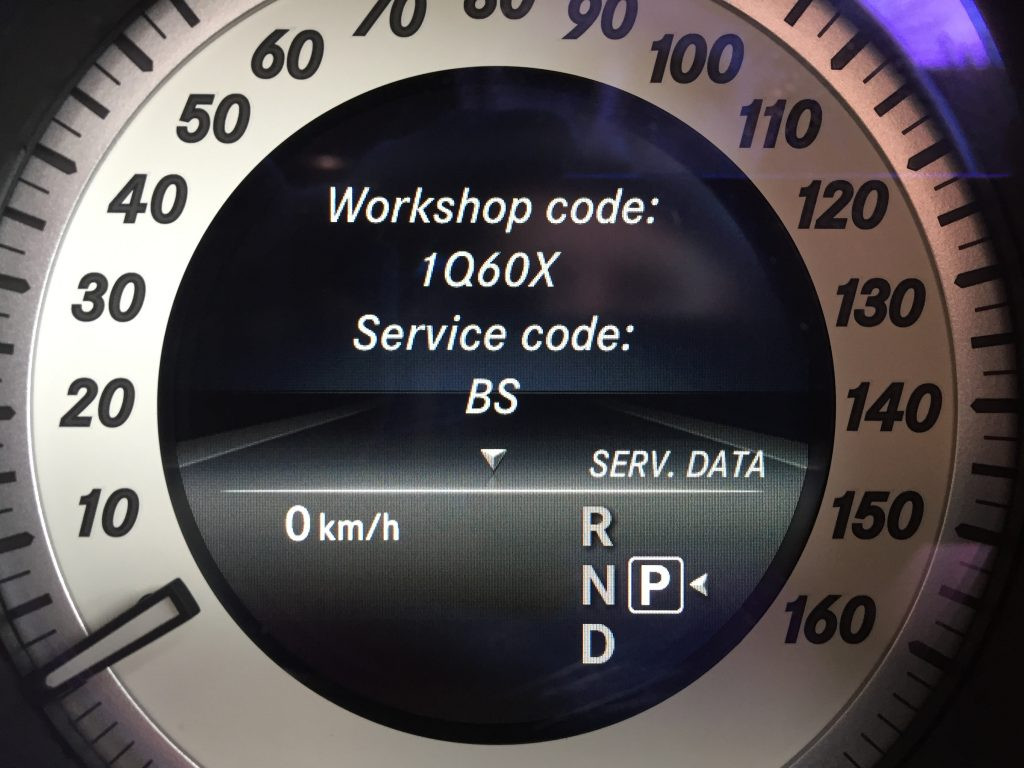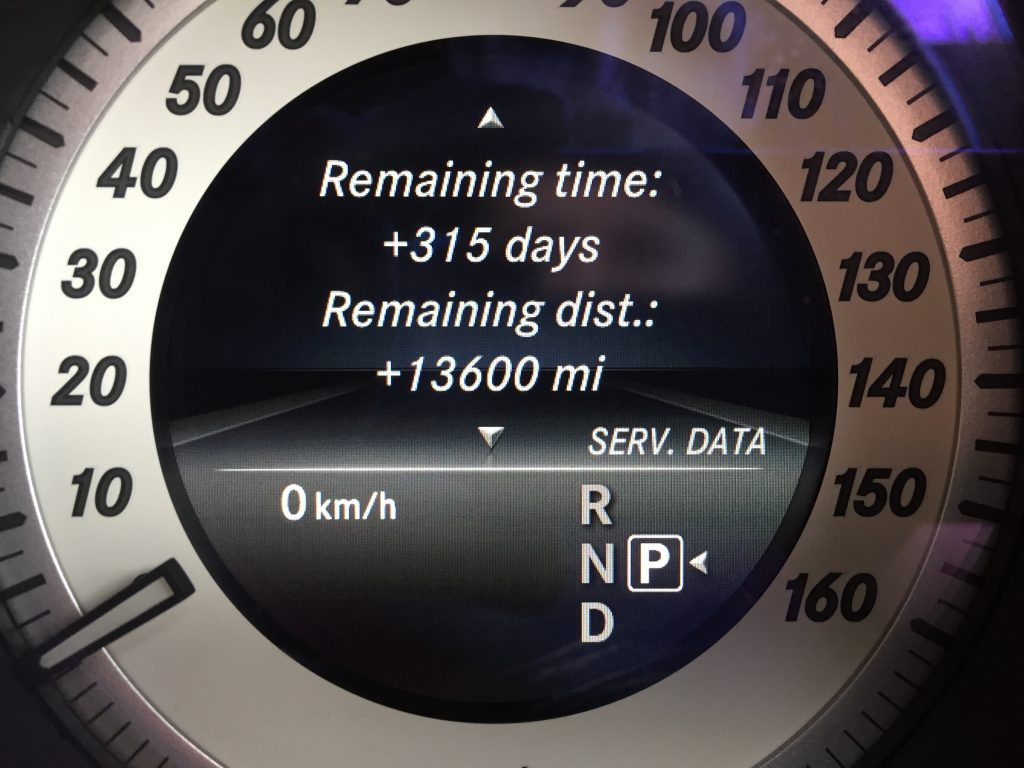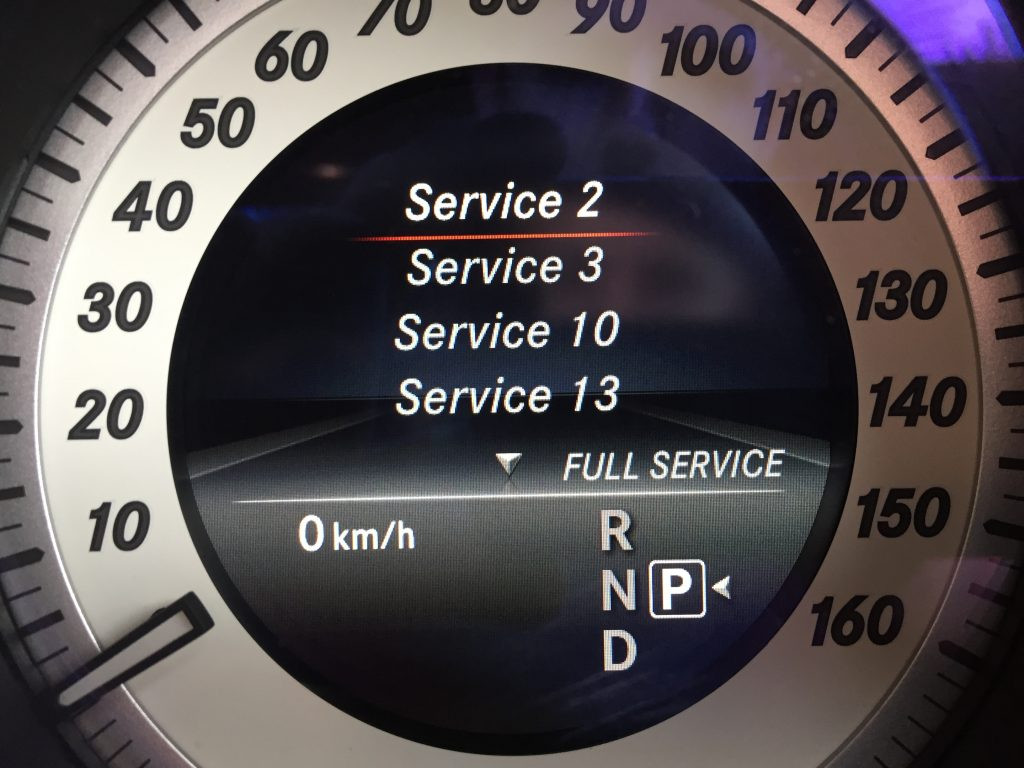

Mercedes-Benz service codes, including the frequently encountered “AK” code, can initially seem perplexing. AutoExplain.com is here to demystify these codes, providing a comprehensive breakdown of what they mean and how they impact your Mercedes-Benz maintenance schedule. With a clearer understanding of Mercedes service scheduling and maintenance schedule intervals, you’ll be better equipped to keep your vehicle running smoothly.
Table of Contents
ToggleThe Mercedes-Benz Assyst Plus system is an advanced service management system designed to inform drivers about required maintenance. It has evolved over time, transitioning from simple A/B service indicators to more complex alphanumeric codes. Let’s dive deeper into understanding this system:
Initially, Mercedes-Benz vehicles used a straightforward “Assyst” system indicating either an “A” or “B” service was due.
In addition to these services, there were “Additional Service Items” based on age or mileage, such as air filter replacement, fuel filter replacement, brake fluid change, coolant change, spark plug replacement, and gearbox oil/filter change.
The “Assyst Plus” system was introduced to account for time and wear-specific maintenance items, along with any special equipment relevant to maintenance. This system was first seen on models like the 211 E Class, 251 R Class, 164 ML Class, and 169 A Class.
The service indicators expanded to include letters up to “H,” such as A, B, C, D, E, F, G, or H. However, this caused confusion for many accustomed to the simple A/B servicing.
To address the confusion, Mercedes-Benz models from around 2008, such as the 204 C Class and 212 E Class, adopted a system where numbers or letters were added after the “A” or “B,” indicating when “Additional Service Items” were due. This resulted in combinations like A1, B1, A5, B5, A3, AK, AC, and B0.
This alphanumeric system also aligned with the introduction of the Mercedes-Benz Digital Service Book (DSB) around the same time.
Each service item is numbered, and a “Workshop Code” accompanies the letter and additional number/letter combination. To access the workshop code, you need to enter the workshop menu on the instrument cluster. On most cars with a 12-button steering wheel, this can be achieved by:
Based on these examples:
 Mercedes Benz Instrument Cluster
Mercedes Benz Instrument Cluster
Here are some of the common additional service items:
It is crucial to cross-reference these items with the service sheet for your specific vehicle, as there may be important details that you need to be aware of. Service sheets can be found via WIS (Workshop Information System) or platforms like Autodata.
This section provides a detailed list of Mercedes-Benz service codes, including the display code, workshop code, and corresponding service items. Note that this list is not exhaustive but serves as a valuable guide.
| Display Code | Workshop Code | Service Items |
|---|---|---|
| A | 505 | Service items 1, 3 |
| A1 | D0D | Service items 1, 3, 4 |
| A2 | 550A | |
| A3 (Diesel) | Service items 1, 3, 8, 11 | |
| A3 (Petrol) | Service items 1, 3, 8, 12 | |
| A4 | D50J | Service items 1, 3, 8, 10, 11 |
| A5 | ||
| A6 | DD0S | Service items 1, 3, 4, 8, 10, 11 |
| A7 | G50M | Service items 1, 3, 20 |
| A8 | Q50V | Service items 1, 3, 10, 20 |
| A9 | GD0V | Service items 1, 3, 4, 20 |
| A0 | 850D | Service items 1, 3, 10 |
| AC | QD051 | Service items 1, 3, 4, 10, 20 |
| AF | KD001 | Service items 1, 3, 4, 8, 12, 20 |
| AH | 801050E | Service items 1, 3, 13, 24 |
| AG | VD0A1 | Service items 1, 3, 4, 8, 10, 11, 20 |
| AK | 10D0E | Service items 1, 3, 13 |
| AP | 15D0K | |
| B | 606 | Service items 2, 3 |
| B1 | E0E | Service items 2, 3, 4 |
| B2 | 8E0N | Service items 2, 3, 4, 10 |
| B3 | 560B | Service items 2, 3, 8, 11 |
| B4 | B60H | Service items 2, 3, 8, 10, 11 |
| B5 | 5E0K | Service items 2, 3, 4, 8, 11 |
| B5 | 3E0H | Service items 2, 3, 4, 8, 12 |
| B6 | DE0T | Service items 2, 3, 4, 8, 10, 11 |
| B7 | G60N | Service items 2, 3, 20 |
| B7 | GN061 | Service items 2, 3, 15, 20 |
| B8 | Q60W | Service items 2, 3, 10, 20 |
| B9 | GE0W | Service items 2, 3, 4, 20 |
| B0 | 1607 | Service items 2, 3, 8 |
| B0 | 960F | Service items 2, 3, 8, 10 (on a GL63) |
| BD | M60T | Service items 2, 3, 8, 11, 20 |
| BE | V6031 | Service items 2, 3, 8, 10, 11, 20 |
| BF | ||
| BK | 10E0F | Service items 2, 3, 4, 13 |
| BK | 14E0K | Service items 2, 3, 4, 11, 13 (Reader Submitted, W246) |
| BS | 1Q60X | Service items 2, 3, 10, 13, 20 |
The “AK” service code on a Mercedes-Benz typically indicates the following:
The workshop code associated with the “AK” service is “10D0E.”
 Mercedes Benz Workshop Menu
Mercedes Benz Workshop Menu
To fully understand what each service code entails, let’s break down each service item:
A minor inspection involves a visual check of essential components to identify potential issues early. Key checks include:
A major inspection includes all the checks performed during a minor inspection, plus a more in-depth examination of the vehicle’s systems and components. Additional checks include:
This is a fundamental maintenance task essential for engine health and longevity. The process involves:
Brake fluid is hygroscopic, meaning it absorbs moisture from the air, which can lead to reduced braking performance and corrosion within the brake system. A brake fluid change involves:
Some Mercedes-Benz models are equipped with a combination filter that combines the functions of a cabin air filter and an activated carbon filter. This filter helps to remove dust, pollen, odors, and pollutants from the air entering the cabin. Replacement involves:
The engine air filter prevents dirt, dust, and debris from entering the engine. A clean air filter ensures optimal engine performance and fuel efficiency. Replacement involves:
To ensure smooth and reliable operation of the sunroof, the guide rails should be cleaned and regreased periodically. This involves:
The fuel filter prevents contaminants from entering the fuel system, protecting the fuel injectors and other components. Replacement involves:
Spark plugs ignite the air-fuel mixture in the engine’s cylinders, and they wear out over time, leading to reduced engine performance and fuel efficiency. Replacement involves:
Engine coolant helps to regulate the engine’s temperature, preventing it from overheating or freezing. Over time, coolant can become contaminated and lose its effectiveness, so it should be replaced periodically. Replacement involves:
This service may involve additional checks and maintenance of the main coolant circuit, especially in hybrid models, ensuring all components are functioning correctly and efficiently. This can include inspecting hoses, connections, and the water pump.
If your Mercedes-Benz is equipped with a towing hitch, it is important to lubricate the moving parts to ensure smooth and reliable operation. This involves:
The gearbox oil (transmission fluid) lubricates the gears and other moving parts in the transmission. Over time, the oil can become contaminated and lose its effectiveness, so it should be changed periodically, along with the filter. Replacement involves:
The cambelt (timing belt) synchronizes the rotation of the camshaft and crankshaft, ensuring the engine’s valves open and close at the correct time. Over time, the cambelt can wear out and break, leading to serious engine damage. The water pump circulates coolant through the engine to prevent overheating. Replacing the cambelt and water pump involves:
 Mercedes Benz Service Dashboard
Mercedes Benz Service Dashboard
Let’s consider a real-world example to illustrate how to decode a Mercedes-Benz service code. Suppose your car indicates it is due for a “BS” service. To understand what this entails, you can access the workshop menu on the instrument cluster.
From the workshop menu, you find the following information:
Based on this information, the “BS” service includes:
Mercedes-Benz vehicles, like all cars, can experience issues over time. Here are some common problems and troubleshooting tips:
Engine oil leaks can occur from various locations, such as the valve cover gasket, oil pan gasket, or rear main seal.
Transmission problems can manifest as slipping gears, rough shifting, or failure to shift.
Electrical issues can range from faulty sensors to malfunctioning control modules.
Suspension problems can affect ride quality, handling, and tire wear.
Brake problems can compromise safety and should be addressed immediately.
While some maintenance tasks can be performed by vehicle owners, professional service and diagnostics offer several advantages:
Professional technicians have the training, experience, and equipment to accurately diagnose complex issues.
Professional technicians use the correct tools, parts, and procedures to perform repairs to the highest standards.
Having your vehicle serviced by a professional can help maintain your warranty coverage.
Professional technicians can identify potential safety issues and address them before they become major problems.
Professional technicians stay up-to-date on the latest technologies and repair techniques through ongoing training.
 Mercedes Benz Service Items
Mercedes Benz Service Items
Professional Mercedes-Benz technicians use specialized diagnostic tools and equipment to accurately diagnose and repair vehicles. These tools include:
The Mercedes-Benz Star Diagnosis system is a comprehensive diagnostic tool used to read fault codes, perform component tests, and program control modules.
XENTRY Diagnosis is the successor to the Star Diagnosis system, offering enhanced diagnostic capabilities and access to the latest software updates and technical information.
An oscilloscope is used to analyze electrical signals and waveforms, helping technicians diagnose sensor and circuit problems.
A multimeter is used to measure voltage, current, and resistance in electrical circuits, aiding in the diagnosis of electrical issues.
Scan tools are used to read fault codes and monitor live data from the vehicle’s computer systems.
AutoExplain.com is dedicated to providing comprehensive information and support for Mercedes-Benz owners and technicians. Here’s how we can assist you:
If you’re facing a challenging issue with your Mercedes-Benz, AutoExplain.com offers remote diagnostic services. Our team of experienced technicians can connect to your vehicle remotely and help you diagnose the problem quickly and accurately.
AutoExplain.com provides remote software programming and installation services for Mercedes-Benz vehicles. Whether you need to update your navigation system or reprogram a control module, our technicians can handle the job remotely.
If you need a new key for your Mercedes-Benz, AutoExplain.com offers key programming services. Our technicians can program a new key remotely, saving you time and money.
AutoExplain.com offers technical support via WhatsApp and email to help you with any questions or issues you may have. Our team of experts is available to provide guidance and assistance.
Keeping up with the latest Mercedes-Benz service information is crucial for proper maintenance and repair. Here are some resources to help you stay informed:
The Mercedes-Benz WIS provides detailed repair procedures, wiring diagrams, and technical information for all Mercedes-Benz models.
The Mercedes-Benz EPC allows you to look up parts information and diagrams for your vehicle.
Online forums dedicated to Mercedes-Benz vehicles can be a valuable resource for sharing information and getting advice from other owners and technicians.
AutoExplain.com provides articles, guides, and resources to help you understand and maintain your Mercedes-Benz.
When performing maintenance or repairs on your Mercedes-Benz, it is important to use genuine Mercedes-Benz parts. Genuine parts are designed and manufactured to meet the highest standards of quality and performance, ensuring optimal reliability and longevity.
Genuine Mercedes-Benz parts are made from high-quality materials and undergo rigorous testing to ensure they meet the manufacturer’s specifications.
Genuine parts are designed to fit perfectly in your vehicle, ensuring proper operation and avoiding potential problems.
Using genuine parts can help maintain your warranty coverage, as the manufacturer may not cover repairs if aftermarket parts are used.
Genuine parts are designed to deliver optimal performance, ensuring your vehicle runs smoothly and efficiently.
Genuine parts are designed with safety in mind, providing reliable performance and protecting you and your passengers.
 Mercedes Benz Service Next Steps
Mercedes Benz Service Next Steps
While professional servicing is highly recommended, there are some basic checks you can perform yourself to keep an eye on your Mercedes-Benz’s condition:
Regularly check the levels of engine oil, coolant, brake fluid, power steering fluid, and windshield washer fluid. Top up as necessary.
Ensure all interior and exterior lights are functioning correctly. Replace any burned-out bulbs.
Check tire pressure regularly and adjust as needed. Also, inspect tires for wear and damage.
Check the condition of windshield wipers and replace them if worn or damaged.
Perform a visual inspection of the engine compartment and under the vehicle for any signs of leaks, damage, or corrosion.
Diagnostic Trouble Codes (DTCs) are codes stored in the vehicle’s computer system when a problem is detected. Understanding these codes can help you diagnose and repair issues.
DTCs can be read using a scan tool or diagnostic system.
Each DTC corresponds to a specific problem or issue. Refer to a Mercedes-Benz service manual or online database to interpret the meaning of each code.
After repairing the issue, clear the DTCs from the vehicle’s computer system.
Understanding your Mercedes-Benz maintenance schedule is crucial for keeping your vehicle in top condition. The maintenance schedule outlines the services and inspections that should be performed at specific intervals.
Refer to your vehicle’s owner’s manual for the recommended maintenance schedule.
The Assyst Plus system provides reminders for upcoming services and maintenance tasks.
Keep detailed records of all services and maintenance performed on your vehicle.
Here are some frequently asked questions related to Mercedes-Benz service codes:
The “A” service code indicates a minor service, including an engine oil and filter change and a minor vehicle inspection.
The “B” service code indicates a major service, including an engine oil and filter change, pollen filter replacement, and a major vehicle inspection.
The “AK” service code includes a minor inspection, engine oil and filter change, and engine coolant renewal.
To access the workshop menu, turn the ignition to position 1, ensure the overall mileage is displayed, press and hold the call answer button, and while continuing to hold the call answer button, press and hold the OK button.
Service sheets can be found via the Mercedes-Benz Workshop Information System (WIS) or platforms like Autodata.
Using genuine parts ensures quality, reliability, perfect fit, warranty coverage, and optimal performance and safety.
While some maintenance tasks can be performed by vehicle owners, professional service is recommended for accurate diagnosis and proper repairs.
Engine oil should be changed according to the manufacturer’s recommendations, typically every 10,000 miles or once a year.
The Mercedes-Benz Star Diagnosis system is a comprehensive diagnostic tool used to read fault codes, perform component tests, and program control modules.
AutoExplain.com offers remote diagnostic services, software programming and installation, key programming services, and technical support via WhatsApp and email.
 Mercedes Benz Instrument Details
Mercedes Benz Instrument Details
Navigating Mercedes-Benz service codes and maintenance can be complex. AutoExplain.com is here to provide expert assistance. Whether you need help decoding a service code or require remote diagnostic services, our team is ready to assist you.
Contact us today:
Let AutoExplain.com help you keep your Mercedes-Benz running smoothly and efficiently. Reach out today for unparalleled support and expertise in Mercedes-Benz diagnostics and servicing. We look forward to hearing from you and assisting with your automotive needs.
Call to Action:
Experiencing a perplexing service code on your Mercedes-Benz? Don’t let it stress you out! Reach out to AutoExplain.com for fast and professional technical support. Connect with our experts via WhatsApp at +1(936)2896695 or email us at [email protected] for immediate assistance. Let us help you get back on the road with confidence.








At AutoExplain, we provide automotive online repair service, auto repair tips, car repair manuals & document & training course to help mechanics of all experience levels—fix vehicles efficiently
AUTO EXPLAIN LLC
Employer Identification Number (EIN):
38-4349958
Whatsapp Us: +1(936)2896695
Gmail: [email protected]
Our Workshop: 1500 N Grant ST Sten Denver, Colorado, United States
Copyright 2025 © AutoExplain